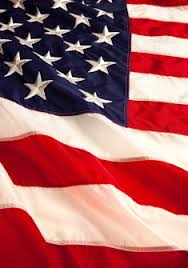
Memorial Day is much more than just a three-day weekend and a chance to get the year's first sunburn. Here's a handy 10-pack of facts to give the holiday some perspective.
- It started with the Civil War
Memorial Day was a response to the unprecedented carnage of the Civil War, in which some 620,000 soldiers on both sides died. The loss of life and its effect on communities throughout the country led to spontaneous commemorations of the dead:
- In 1864, women from Boalsburg, Pa., put flowers on the graves of their dead from the just-fought Battle of Gettysburg. The next year, a group of women decorated the graves of soldiers buried in a Vicksburg, Miss., cemetery.
- In April 1866, women from Columbus, Miss., laid flowers on the graves of both Union and Confederate soldiers. In the same month, in Carbondale, Ill., 219 Civil War veterans marched through town in memory of the fallen to Woodlawn Cemetery, where Union hero Maj. Gen. John A. Logan delivered the principal address. The ceremony gave Carbondale its claim to the first organized, community-wide Memorial Day observance.
- Waterloo, N.Y. began holding an annual community service on May 5, 1866. Although many towns claimed the title, it was Waterloo that won congressional recognition as the "birthplace of Memorial Day."
- General Logan made it official
Gen. Logan, the speaker at the Carbondale gathering, also was commander of the Grand Army of the Republic, an organization of Union veterans. On May 5, 1868, he issued General Orders No. 11, which set aside May 30, 1868 "for the purpose of strewing with flowers, or otherwise decorating the graves of comrades who died in defense of their country during the late rebellion."
The orders expressed hope that the observance would be "kept up from year to year while a survivor of the war remains to honor the memory of his departed comrades."
- It was first known as Decoration Day
The holiday was long known as Decoration Day for the practice of decorating graves with flowers, wreaths, and flags. The name Memorial Day goes back to 1882, but the older name didn't disappear until after World War II. Federal law declared "Memorial Day" the official name in 1967.
- The holiday is a franchise
Calling Memorial Day a "national holiday" is a bit of a misnomer. While there are 10 federal holidays created by Congress—including Memorial Day—they apply only to Federal employees and the District of Columbia. Federal Memorial Day, established in 1888, allowed Civil War veterans, many of whom were drawing a government paycheck, to honor their fallen comrades without being docked a day's pay.
For the rest of us, our holidays were enacted state by state. New York was the first state to designate Memorial Day a legal holiday, in 1873. Most Northern states had followed suit by the 1890s. The states of the former Confederacy were unenthusiastic about a holiday memorializing those who, in Gen. Logan's words, "united to suppress the late rebellion." The South didn't adopt the May 30 Memorial Day until after World War I, by which time its purpose had been broadened to include those who died in all the country's wars.
In 1971, the Monday Holiday Law shifted Memorial Day from May 30 to the last Monday of the month.
- It was James Garfield's finest hour—or maybe hour-and-a-half
On May 30, 1868, President Ulysses S. Grant presided over the first Memorial Day ceremony at Arlington National Cemetery—which, until 1864, was Confederate Gen. Robert E. Lee's plantation.
Some 5,000 people attended on a spring day which, The New York Times reported, was "somewhat too warm for comfort." The principal speaker was James A. Garfield, a Civil War general, Republican congressman from Ohio and future president.
"I am oppressed with a sense of the impropriety of uttering words on this occasion," Garfield began, and then continued to utter them. "If silence is ever golden, it must be beside the graves of fifteen-thousand men, whose lives were more significant than speech, and whose death was a poem the music of which can never be sung." It went on like that for pages and pages.
As the songs, speeches and sermons ended, the participants helped to decorate the graves of the Union and Confederate soldiers buried in the cemetery.
- Not even the Unknown Soldier can avoid media scrutiny these days
"Here rests in honored glory an American soldier known but to God." That is the inscription on the Tomb of the Unknowns, established at Arlington National Cemetery to inter the remains of the first Unknown Soldier, a World War I fighter, on Nov. 11, 1921. Unknown soldiers from World War II and the Korean War subsequently were interred in the tomb on Memorial Day 1958.
An emotional President Ronald Reagan presided over the interment of six bones, the remains of an unidentified Vietnam War soldier, on Nov. 28, 1984. Fourteen years later, those remains were disinterred, no longer unknown. Spurred by an investigation by CBS News, the defense department removed the remains from the Tomb of the Unknowns for DNA testing.
The once-unknown fighter was Air Force pilot Lt. Michael Joseph Blassie, whose jet crashed in South Vietnam in 1972. "The CBS investigation suggested that the military review board that had changed the designation on Lt. Blassie's remains to 'unknown' did so under pressure from veterans' groups to honor a casualty from the Vietnam War," The New York Times reported in 1998.